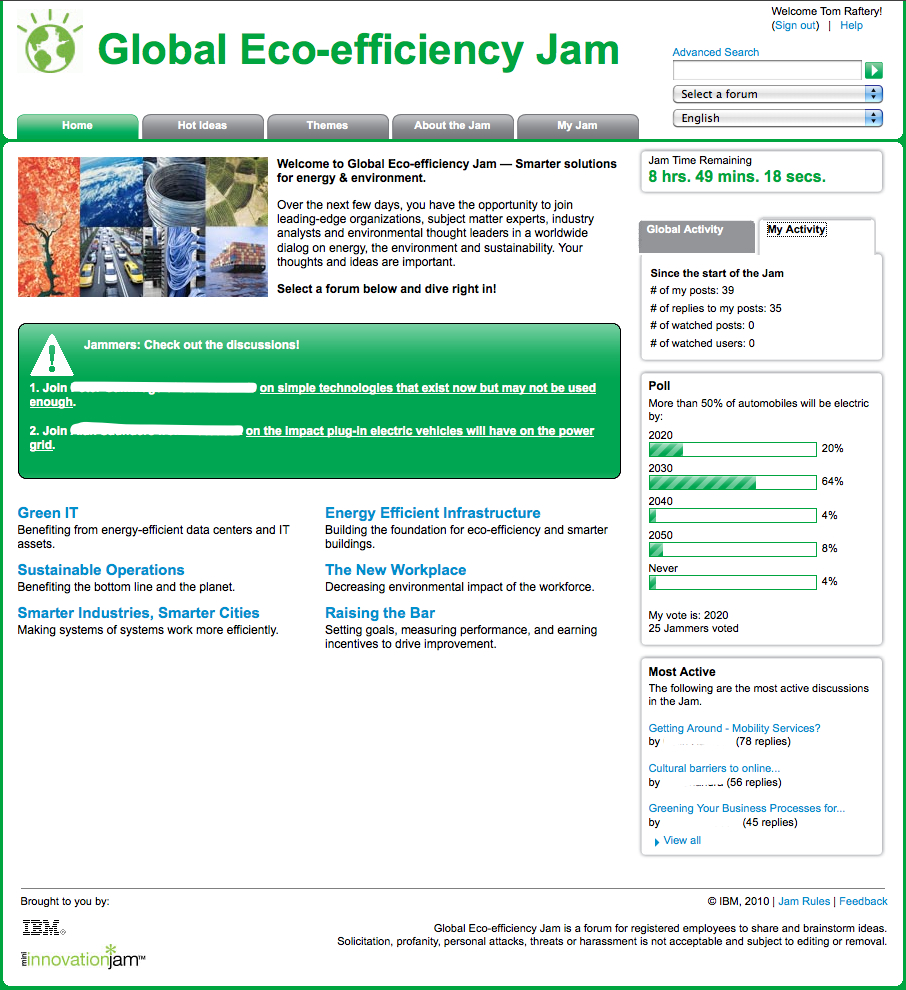Today is the final day of IBM’s Global Eco-efficiency Jam (it finishes at 6pm CET today) and it has been awesome.
There have been hundreds of discussions on all manner of Eco-related topics – everything from LEED certification, to Green software engineering, to Energy Efficiency certificates to Smart cities and collaboration.
People have been asking questions like:
If environmental reporting and efficiency actions becomes the norm, what kinds of incentives and rebates are available to help improve the time to value and return on investments?
Currently this question has had 8 replies.
The question with the most replies (right now) is –
Would you use a mobility car service – like the bicycle rental scheme in Paris but with a small, probably electric vehicle – rather than public transportation or a taxi?
and so far it has had 78 responses!
Often answers to questions directly contradict one another – such as the following answers to the mobility question above:
Yes, I would. But more for fun or visiting a city. Visiting clients on e-bike wearing business dress is difficult
and
When Montreal introduced its version of V?lib, called Bixi, most people anticipated tourists would be the prime users. But looking around the city on a nice summer day, most the bikes are used by men and women in business suits, going from one building to the next. For short rides of 2-4 km, you needn’t even break a sweat.
These kind of contradictory answers are inevitable when the participants come from over 100 countries reflecting their country’s culture and infrastructure.
Other discussions were more straightforward
Looking beyond basic power policies on the operating system, do you have any form of PC power management operating on your PC at home or at work?
[UPDATE – this question came from @karolinashaw, Public Relations Manager 1E]
There is plenty of discussion on water as well with people discussing the merits of water metering, water harvesting and town/city water policies.
While I am contributing a bit to the discussions (I have added 39 posts and had 37 replies so far), I am learning a huge amount and coming into contact with participants I might never otherwise have met.
IBM should make this a regular event, no question.
[Disclosure] IBM asked me not to use the names of Jam participants in any blog posts I make here because IBM hadn’t sought their permission so I removed the names from the image above and didn’t credit people quoted above. If I have used your content and you are happy to have me credit you, let me know in the comments or by email ([email protected]) and I’m more than happy to do so.

